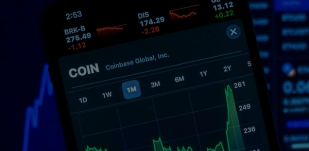What are SWIFT and BIC Codes?
SWIFT stands for Society for Worldwide Interbank Financial Telecommunication, which quickly explains why it’s only ever referred to as an acronym. SWIFT sets some basic standards and rules for financial transactions around the world and provides a secure network that more than 10,000 banks and other financial institutions use to make those international transactions.
BIC stands for Bank Identifier Code. Just to confuse things a little, a BIC can also be called a SWIFT BIC, SWIFT ID or SWIFT code even though they’re the same thing. We’ll just refer to it as a SWIFT code.
In real language, a SWIFT code is like an international bank ID that describes who the bank (or other financial institution) is and where they are in the world. Banks use them for everything from international wire transfers and SEPA payments to simple message exchanges to make sure they’re going to the right place.
You’ll find your bank’s SWIFT code on any of your bank statements or in your account details within the secure area of your online bank.
Need bank beating exchange rates
How does a SWIFT code work?
A SWIFT code works because of the characters it’s made up of. Each helps identify a different piece of information about the bank. Let’s break these down:
- The first four characters are the bank identifier code.
- The next two characters are the country code.
- The next two are the bank’s head office location code li class="mb-4">And then there’s an optional three-character bank branch code.
When do you need to use a SWIFT code?
You’ll need a SWIFT code every time you send money internationally (remember, it might also be called a SWIFT BIC or SWIFT ID). Like a virtual address, it tells banks where in the world to send the money and without it your transaction wouldn’t happen.
If you’re receiving money from abroad, you’ll need to give the sender your bank’s SWIFT code so they know where to send it. If you’re sending money overseas, you’ll need the SWIFT code of the bank you’re sending it to. If the payee hasn’t given you their SWIFT you can look it up online, but it’s always worth double checking with them to make sure it’s right – you don’t want to send it to the wrong account, after all.
The Clear Currency effect:
Keep it simple
A.K.A.
A SWIFT code is also known as a SWIFT BIC or SWIFT ID.
Use
SWIFT codes are used to identify banks and other financial institutions in international transactions and transfers.
Send and Receive
You’ll need a SWIFT code if you’re sending or receiving money from abroad.
Get it right
Make sure you enter the right SWIFT code as using the wrong one could delay your transaction or even worse, your money could end up going to the wrong place.
Related Articles
How to Mitigate Foreign Exchange Risk
Currency risk can have a significant effect on the efficiency and profitability of any international business. Each exchange rate movement affects how much you receive from sales and what you pay to suppliers.
Read more
Moving to Dubai from the UK: Checklist
You’re ready for a new life overseas and have decided you’re moving to Dubai. Now it’s time to consider the various costs involved, from your visa and accommodation, to health insurance, shipping your belongings and bringing your beloved pets along too.
Read more
Currency Outlook Quarter 1 2023
Clear Currency looks back at the performance of the US dollar, euro and sterling in Q4 2022, and assesses what might be in store for Q1 2023.
Read more


